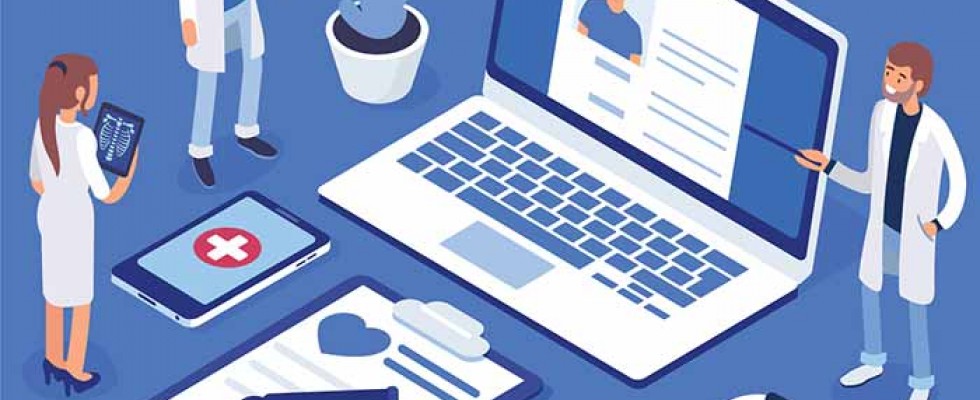What if you could see the future? When will homecare providers break through to policymakers about the critical value of care at home? Even more critically, when will homecare providers and visionary academics collaborate to make hospitalization a rare event?
While the ability to predict the future is not an exact science, Harvard scientist Francis Aguilar took a step in that direction in his 1967 book, “Scanning the Business Environment.” He developed a process that evaluated political, economic, social and technological trends—the PEST analysis. Researchers have since added two components—the environment and legal issues—to change the acronym to PESTEL.
The process is not perfect, but much like modern hurricane forecasting, it can predict a cone of possibility, and that cone offers organizations a significant advantage in a changing world. Today’s health care reform, in the words of another Harvard professor, Clayton Christensen, is a time of “disruptive innovation.”
Change Drivers
Uncontrolled costs, poor quality outcomes, failures in patient safety and the social inequities in access to care are driving today’s aggressive pace of health systems change. Health care costs are $3 trillion per year—nearly 20% of the U.S. gross domestic product. An increase in personal bankruptcies related to health care expenses and runaway profits in the pharmaceutical and insurance industries all point to a need for some kind of disruption to the current model.
Many say the United States has the best health care in the world, but the World Health Organization and monitors of global health care dispute that claim. A 2018 Commonwealth Fund report ranked the U.S. last among the world’s top 11 industrialized nations in outcomes, efficacy, care process, equity and value.
Patient safety has been a growing area of concern for more than 20 years. Amid evidence that our volume-driven payment model has resulted in overtreatment, the U.S. has the added insult of harm—and even death—caused by system failings. A recent documentary film called “To Err is Human” cites human error in hospitals as the third leading cause of death in the United States; human error results in 440,000 deaths a year, behind only heart disease and cancer.
Some troubling statistics:
- One-third of all hospitalizations result in a medical error.
- There are 1.7 million hospital-acquired infections per year.
- From 2010 to 2014, surgeons operated on the wrong body part 2,314 times, left tools in patients 4,857 times and operated on the wrong patient on 27 occasions.
Finally, a lack of access to care in the U.S., one of the few developed nations without universal coverage, is a growing issue of social inequality.
Connection in Aging
The future of aging will spotlight seniors’ interconnectedness, sharing capabilities with others, distributing responsibilities, matching talents and building a sort of surrogate family rather than living alone, according to Joseph Coughlin, founder and director of MIT’s Age Lab. That interdependence is also the route most forward-thinking health care providers are navigating today.
Homecare providers have long combined the businesses of home health, hospice, palliative care, private duty, home medical equipment and similar partnerships. This approach allowed patients and families choices within the same organization. Forward-thinking homecare providers are developing even more connections, sometimes called longitudinal care. Establishing, nurturing and retaining long-term relationships with patients and families are key to capitalizing on the opportunity to provide for a patient’s most urgent needs. An established relationship, existing knowledge of the patient’s condition and a rapport with family can result in smoother transitions, better outcomes and reduced suffering for the patient and their loved ones.
An organization’s ability to operate smoothly in the status quo doesn’t necessarily translate to periods of rapid change. Competencies are vital in vetting deals, courting partners and closing on innovative collaboratives across and outside of the continuum of health care. Historically, consumers and referral sources have been patients, families, hospitals and physicians. New consumers of care are more sophisticated and data-driven, and are also adept at identifying provider partners for care outcomes, patient satisfaction and cost-effectiveness. The move away from a volume-based payment model to a value-driven system has been the catalyst that has resulted in multi-state health systems, accountable care organizations, managed care organizations, and other examples such as Walmart’s Centers of Excellence and Atul Gawande’s Haven partnership with Amazon, Chase and Berkshire Hathaway.
Creative Destruction
The current transformational change across health care systems involves creative destruction, another term coined by Christensen, who researches disruptive innovation. Companies making the transition will be able to envision the future, will embrace innovation and will be adept at navigating the calculated risks that come with opportunity. Human resources are critical, from the C-suite to the frontline team. Recruiting and retaining proven, competent leaders and frontline workforce talent who are able to adapt mid-course while managing a multitude of variables is essential.
Technology and data will allow for predictive analytics to reveal critical interventional moments that can prevent hospital admissions or readmissions. Data-driven decision-making, with robust analysis of internal performance, external benchmarking and population health trends, are also critical in today’s era of intense competition. A successful provider of care at home is proficient in applying the right technologies. The highest-performing software developers not only connect billing, documentation and in-depth data within electronic health records, but also link up wearable devices, Bluetooth-enabled smart home innovations and other devices to predict consumers’ behaviors.
Look at Royal Dutch Shell, where scientists were able to see over the horizon to make better decisions for customers, employees and stockholders. The Shell team was tireless in asking “What if?” The team’s sole duty was to anticipate the impact of politics, economics, societal trends and technological advances. That work provided Shell the foresight to navigate the company’s relationships with the governments of various nations, business partners, competitors, regulators and scientists. How might homecare’s best and brightest provide the vision, disruption and creativity consumers need for a more just system of health care? And who in the industry is already tackling that challenge?


